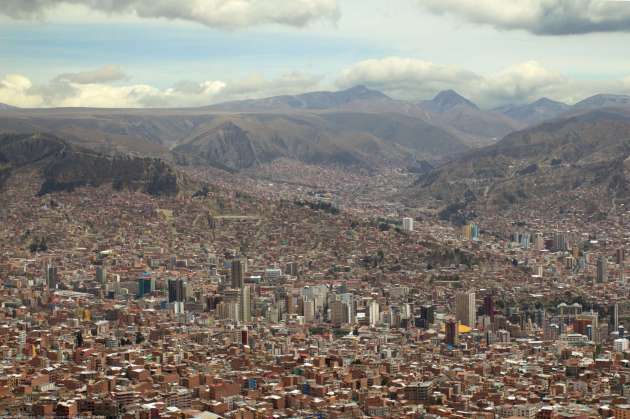

La Paz
La Paz, the highest political capital of the world culminated at 3200m height, is located in a particularly rich geographical region. Ranging on several steps, surprising by its contrasts, in the middle of the Royal Cordillera, the city and its region do not let anybody indifferent. A little bit of History; it was in 1548 that the Spanish Alonzo Mendoza built the city in order to create a relation between the prosperous cities of Potosi and Cusco. Shortly after, it would be relocated on the living place of a small community of Aymara’s miners and would symbolically mark the future of the city. The city of La Paz stands between 3200 and 4000 meters above sea level. It enjoys an ideal geographical localization, at only one hour driving from Titicaca Lake, three hours from Yungas Valleys passing thought the “death road” and at about one hour from the majestic Royal Cordillera. Its natural landscape is a striking beauty; the city is literally surrounded by snowy and cloudy peaks, big plains extending endlessly and, at this altitude, we almost could touch some stars. Urban landscape with plenty of contrasts, this megalopolis with so special geography, recessed in a valley, offers a very good overview of Bolivia. Indeed, along the History, several communities coming from different parts have been living there, and some surprising results appeared. Nowadays, the city expresses a huge social diversity that mixes traditions and modernity (which sometimes creates some sparkles). The city houses, for instance, numerous indigenous markets where you can find all the elements that are necessary to offerings, especially to the Mother-Earth, Pachamama. In parallel, the enormous buildings, headquarters of important international firms, grow up like mushrooms, and it is not surprising to see business-men (or women) wearing a suit & tie. A city with slice and dice colors, variegated like few others on Earth, noisy and vibrant, this is disorientation on its own. Many activities will make you appreciate your stay in the city; museums, cult places and restaurants located in Socopachi district, and traditional peñas, which are probably the best way to be impregnated in and by the local atmosphere.



